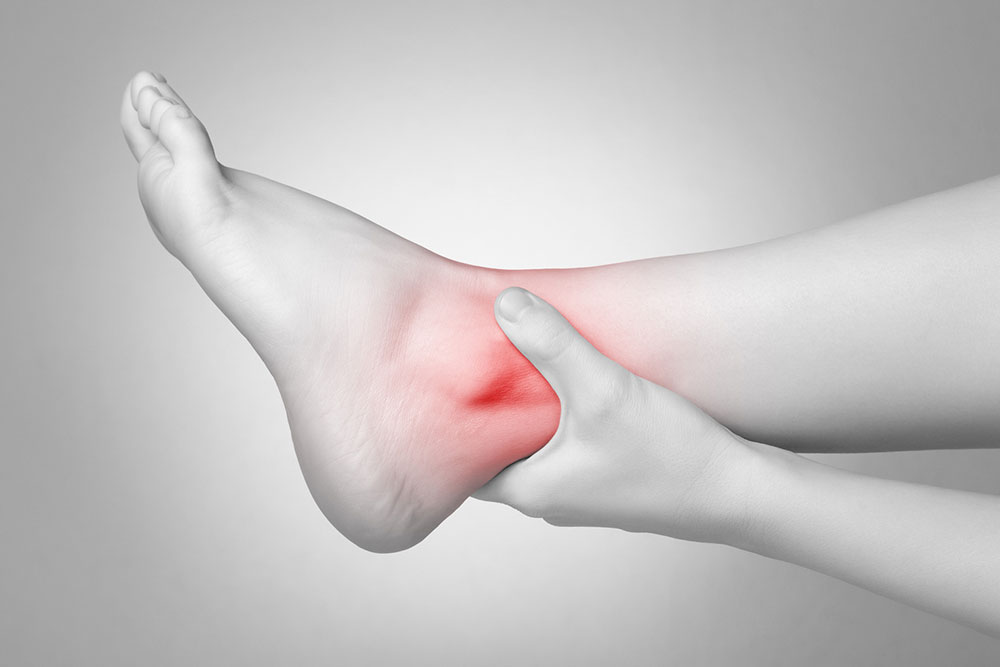Causes and Home Remedies for Heel Pain
An extremely common complaint, heel pain has several common causes. It is vital to make an accurate diagnosis of the cause of the symptoms in order to get appropriate and timely treatment that is directed at the exact cause of the problem. Once the source of the heel pain is clear, a more targeted treatment plan can help in a speedy recovery. Furthermore, knowing the right and the exact cause of the symptoms may help in taking steps to prevent the condition from reoccurring. Below is some information about the common causes of knee pain and the treatment and remedial options.

Causes
Heel pain can sometimes be caused by an injury like a fracture or a sprain. The most common causes of heel pain are caused by medical conditions like:
- Plantar Fasciitis – The plantar fascia is a large ligament in the foot that stretches from the heel bone to the balls of your toes. Plantar fasciitis is an inflammation of this ligament, causing pain in the underside of the heel.
- Achilles tendinitis – The Achilles tendon attaches the calf muscles to the heel bone. Overuse or stress of this muscle can cause wear and tear in this tendon, causing severe pain at the back of the heel.
Home remedies
Heel pain can affect your life in several ways. Still, there are many simple treatments for heel pain. You can try painkillers, NSAIDs, and splints. You can also try some traditional heel pain remedies to get relief from the pain. Depending on the cause, some of the below mentioned home remedies can be used to ease the heel pain.
- Rest your feet – After a day’s strenuous activity, sit down, put your feet up, and relax. When your overworked foot muscles relax, blood circulation to them improves. And just elevating your feet and leaning back in a chair can help in easing any heel pain that may be experienced.
- Choose the right footwear – If you have heel pain, flip-flops nor high-heels may not be the right choice for you. Choosing the right kind of shoes that provide a comfortable fit, a little room to maneuver your toes and feet with just the right elevation for heel and arch support is important to prevent heel pain. Any footwear that stresses the plantar fascia or stretches the Achilles tendon can aggravate heel pain. Consult a doctor for suggestions on choosing the right kind of shoes for your heel pain.
- Ice packs – Use an ice pack to cool and soothe your foot pain. Apply the ice pack to your feet while sitting with your feet up. You can also freeze some water in two bottles and then roll them under your feet for a few minutes until the ice melts.
- Stretching exercises – Stretching exercises can help relieve pain and strengthen the leg and feet muscles. Stand a little bit away from a wall by facing it. Now, put your hands against the wall. Bring one foot forward and bend your knee. You should bend the leg enough so that you can feel the muscles in your heel and the back of your leg stretching. Stay in this position for a few seconds. Go back to your original position with both feet straight up and your hands against the wall. Now bring the other leg forward and repeat the same routine. Do this exercise a few times to get relief from heel pain.
- Massage your feet – A good massage can relieve stress and pain. Sit down and put one foot on the knee of the other. Apply warm olive, coconut, or any other oil of your choice on the foot. Now using both your thumbs, press the foot from the heel and proceed upwards to the balls of the toes and then the toes themselves. Repeat this for a few times. Put the foot down, put the other foot up on the opposite knee and repeat the oil massage
- Take fish oil supplements – Fish oil is rich in omega-3 fatty acids. Several studies show that taking fish oil can be an effective alternative to the non-steroidal anti-inflammatory drugs (NSAIDs) to get relief from pain and muscle stiffness. However, if you are taking medicines for diabetes or other drugs like blood thinners, you should consult the doctor before taking fish oil supplements.
- Epsom salt soak – An Epsom salt soak is a very effective heel pain treatment. Dissolve a cup of Epsom salt in a tub filled with warm water. Soak your feet in the water for around 15 minutes. Dry your feet with a towel, then massage them gently for a few minutes
- Use foot supports – You can get splints and shoe inserts to get foot support. You can wear night splints to keep your feet stretched at night. This prevents you from bending and twisting your feet. It also helps in relaxing your muscles, ligaments, and tendons. You can also wear special shoe inserts. Inserts that lift your heel and provide support for the back of the heel can be an effective treatment for pain in the back of the heel. Supports for the arch of the foot can provide relief from pain caused by plantar fasciitis.

